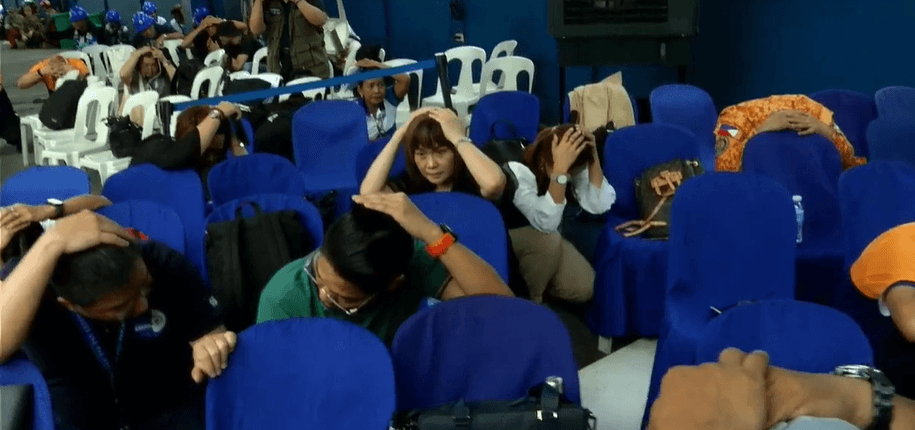OCD tests harmonized contingency plan for 'Big One' during second quarter earthquake drill

The Office of Civil Defense (OCD) successfully tested the efficiency of a harmonized plan to mitigate the impact of the “Big One”, a magnitude 7.2 earthquake presumed to hit the country due to the movement of the West Valley Fault (WVF), during the conduct of the second quarter National Simultaneous Earthquake Drill (NSED) on Friday, June 28, in Pasig City.
Department of National Defense (DND) Secretary Gilberto Teodoro Jr. said the collective effort of the government and various stakeholders is vital and must be sustained to achieve the country’s goals of resilience and safety against earthquakes and other hazards.
“Our work to build a safe and disaster-resilient country requires continued public support and participation in this drill and other disaster preparedness activities at the national and local levels,” Teodoro said in a statement read by Defense Undersecretary Irineo Espino.
“During this National Simultaneous Earthquake Drill, we test the response capabilities of the government and other stakeholders for earthquake emergencies to identify possible gaps and recommended needed enhancements in the current plans, policies, protocols and procedures for response operations which include areas of command and control and interoperability of responders,” he added.
The exercise, which was shown livestream by the OCD through its social media pages, tested the efficiency of the Harmonized National Contingency Plan (HNCP), which details the coordination efforts of the national and local governments, as well as other stakeholders in case the Big One strikes.
A full-scale exercise lasting for hours was held in different training areas which featured various scenarios including the activation of a central incident management after the simulated earthquake, the establishment of emergency operations center, the practice of communication and coordination among involved units, a search and rescue (SAR) mission on a collapsed structure, a mass casualty incident management, and the activation of the response cluster, logistics management, and civil military coordinating unit.
The training areas were at the National Emergency Operations Center at Fort Magsaysay in Nueva Ecija; Ugong Norte Barangay Hall in Quezon City which represented the “North Sector”, Kartilya ng Katipunan in Manila for the “West Sector”, the MMDA Motorcycle Riding Academy in Pasig City for the “East Sector”, and Villamor Airbase in Pasay City for the “South Sector”.
The alternate government command and control center at Fort Magsaysay was activated, presuming that the NDRRM Operations Center at Camp Aguinaldo in Quezon City becomes non-operational in the event of the Big One.
Based on the HNCP, the first wave of assisting Regional Disaster Risk Reduction and Management Councils (RDRRMCs) for Metro Manila are the Ilocos RDRRMC for the North Sector; Cagayan Valley RDRRMC for the East Sector; Cordillera Administrative Region (CAR) RDRRMC for West Sector; and Bicol Region RDRRMC for the South Sector.
The OCD simulated the arrival of the assisting RDRRMCs in Metro Manila to establish alternate emergency operations centers in the designated areas. Each assisting RDRRMC has a search, rescue, and retrieval (SRR) team; an incident management team (IMT); and an emergency operations center (EOC) team composed of various government agencies from the region.
Through the exercise, Teodoro said that the capabilities of local government units, government agencies, uniformed services and other organizations involved in responding to the impacts of a devastating earthquake were tested.
“We need to be more proactive and enforce the capabilities of all stakeholders through various ways, and engage the general public even more by inculcating in them the importance of treating disaster preparedness as a way of life,” Teodoro said.
The West Valley Fault moved four times in the past 1,400 years with an interval of 400 to 600 years, according to the OCD. The last major earthquake generated by this fault was in 1658. As of 2024, this was 366 years ago.
The fault traverses Metro Manila areas including Quezon City, Marikina, Pasig, Taguig, and Muntinlupa as well as nearby provinces of Bulacan, Cavite, Rizal, and Laguna.